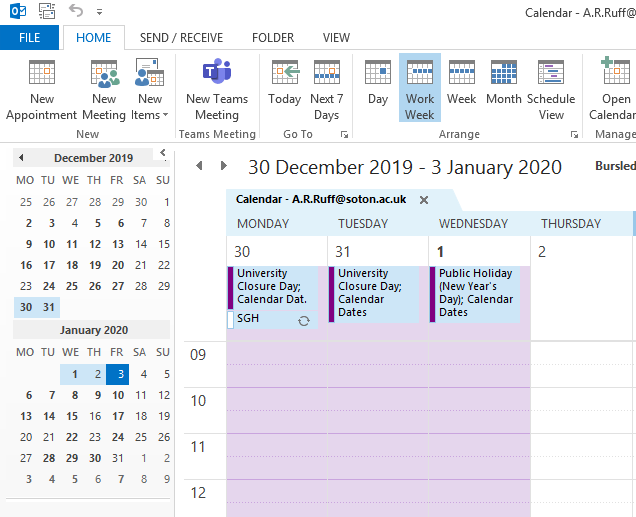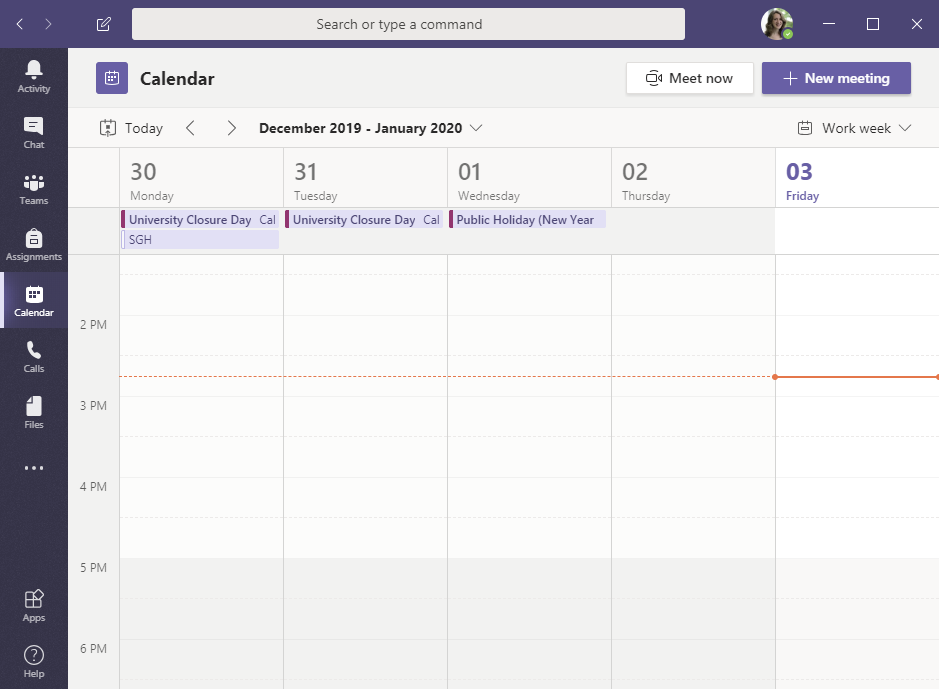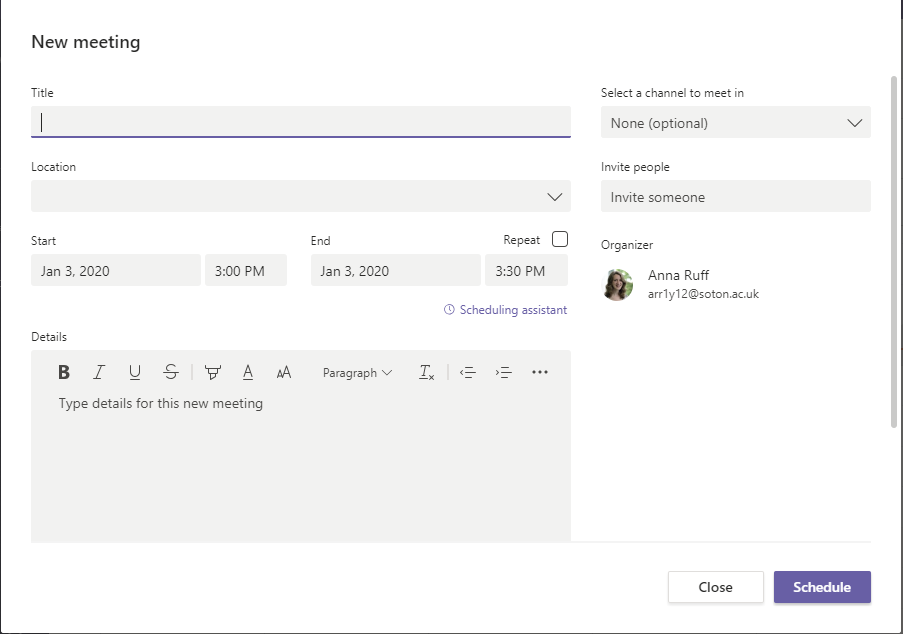December’s eCoffee involved an experimental live event: could we run a session about video meetings simultaneously as a face-to-face session and online for remote participants? While this sounds like something that potentially could involve specialist equipment and planning, we took a more informal approach – reflecting the way in which meetings between colleagues or with students will often need to be run.
Panopto has the option to live-stream recordings, and viewers can add comments or type in questions, but this is essentially designed for transmission of a lecture or meeting that’s led from the front, rather than an interactive session. A number of colleagues will have used Skype or Skype for Business to run video meetings and tutorials, but increasingly these are being phased out in favour of Microsoft Teams. Teams can be accessed via http://go.soton.ac.uk/365, with the option to download the desktop version included in the web version.

There are a number of ways to set up a Teams meeting. It’s possible to do so via the calendar in Outlook 365, using the ‘New Teams Meeting’ button. Alternatively, within Teams it’s possible to access the same Calendar via the left-hand menu, and set up a new meeting here.

A meeting is ‘live’ as soon as it is set up, so the scheduled time is just a guide, although you would expect participants to join at the agreed time. The link to the meeting can be shared beyond the invited participants list (for instance, the link to the eCoffee stream is emailed out across the faculty).

Meetings don’t need to be scheduled – there is a ‘Meet now’ option in the calendar, and there is an option to make a video call in Teams’ Chat, or in the Conversation within any channel.
An example view for a user participating in a Teams meeting is shown below – including the option to choose a screen to share at the base of the screen, and the meeting chat on the right hand side.

Benefits
- Straightforward to set up and use
- Flexible
- Includes options to share your desktop screen with others, or individual documents, as well as participating by video, audio or chat
- Integrates with other Office 365 applications so for instance, can collaborate on a document being discussed during the meeting
- Colleagues outside the university can join
- Text conversation option (useful if no camera/audio)
- Includes the option to record the meeting to Microsoft Stream, which autogenerates a transcript
Challenges
- The size of the group will impact how well an online meeting works – Teams will accommodate up to 250 participants, but the practicalities of involving multiple contributors need to be considered.
- Managing multiple screens and audio from a range of participants in a single space can be challenging – there is a need to resource this sufficiently.
- Ideally need a functioning microphone and a webcam or inbuilt camera on device
- More functionality on desktop app than web version, but this can be slow to run on older machines
- Anyone participating in the meeting can record it (although this is always true for any method of remote meeting, and the meeting owner can delete the recording).
A particular challenge of our eCoffee experiment was that it took place in a non-CLS room. This meant we were not as well set up for sharing audio as we would have liked, which was not always ideal for online participants, and WiFi wasn’t completely reliable. In a usual eCoffee session we find it helpful to have someone other than the presenter following the meeting chat so that any issues like these can be quickly identified and addressed – and trialing this in advance over the summer allowed us to iron out some initial problems.
Teams’ integration with other Office 365 apps gives further functionality, and we briefly discussed the role of Planner and To Do in organising projects, something also touched on in our previous session: Working more efficiently. Office 365 help can be accessed via the Sussed home page, and the IT Training and Development team are offering Chat and virtual meetings seminars for Teams.
Our next eCoffee will be Weds 12 Feb, 10-11 in LF8. Further details will be emailed round and available at http://go.soton.ac.uk/ecoffee in advance of the session. If there is something you’d like to see covered or to contribute to a future session do let us know.

